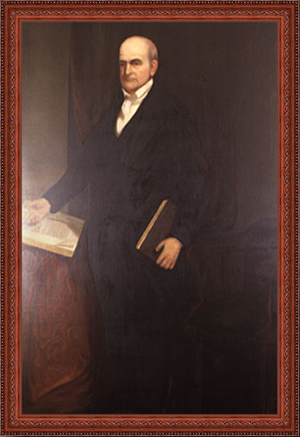1773-1859
Daniel Cady was born on April 29, 1773 in Caanan, Columbia County, New York. He was educated in the town school and went on to study law, first with Judge Whiting in Caanan and then in Troy with John Woodworth. Cady was admitted to the bar in 1795, and commenced practice in Florida, NY, but later moved to Johnstown. Cady served in the New York Assembly from 1808 to 1813, after which he served for a short time as District Attorney of the Fifth District (Albany, Saratoga, Montgomery, Schoharie and Schenectady counties).
A Federalist, Cady was elected to the United States Congress, holding office from March 4, 1815 to March 3, 1817. Highly regarded in the profession, Cady was counsel in many of the important cases of the day, including Jackson v. Sample (1 Johnson’s Cases, 23) where Abraham Van Vechten was counsel for the plaintiff and Daniel Cady and Aaron Burr represented the defendant, and People v Southwick where Chief-Justice Kent presided and counsel were Attorney General Thomas Addis Emmet, and Aaron Burr for the prosecution and Daniel Cady and Ebenezer Foote for the defense. Cady also was counsel for the defense in People v Godfrey in 1819, a landmark case where the issue involved the jurisdiction of the State in a fort occupied by the United States forces.
Following the Constitutional Convention of 1846, Daniel Cady as elected a justice of the reorganized Supreme Court where he served from 1847 to 1854. During one year of his term, in 1849, he was an ex officio judge of the New York Court of Appeals.
Daniel Cady died in Johnstown on October 31, 1859. He is perhaps best known as the father of Elizabeth Cady Stanton.
Source
Albert Rosenblatt. A Biographical History of the New York Court of Appeals (2007).

